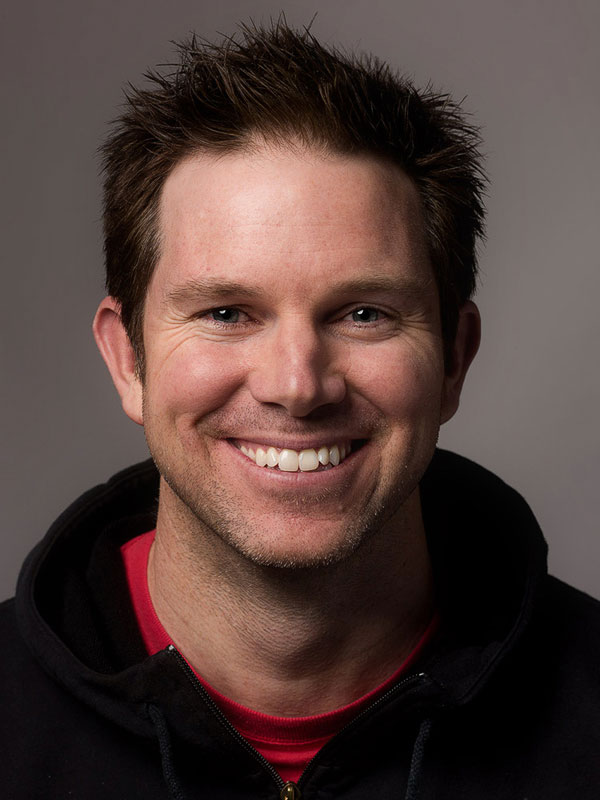 An airline pilot by day and professional landscape photographer by night (and any other down time he may have), Miles Morgan excels in capturing the beauty of the grand landscape. Though he is a native of the Pacific Northwest, Miles finds the flowing lava formations of Hawaii to be his biggest inspiration. We’re pleased to introduce Miles as a new contributor of Outdoor Photography Guide.
An airline pilot by day and professional landscape photographer by night (and any other down time he may have), Miles Morgan excels in capturing the beauty of the grand landscape. Though he is a native of the Pacific Northwest, Miles finds the flowing lava formations of Hawaii to be his biggest inspiration. We’re pleased to introduce Miles as a new contributor of Outdoor Photography Guide.
Outdoor Photography Guide: How did you get started in photography? Specifically how did you make the leap into doing it for a living?
Miles Morgan: Being the son of the professional photojournalist (Hank Morgan), cameras were always nearby… usually stuffed obnoxiously in my face. I dabbled in photography a little during high school, but it wasn’t until 2009 that I became fully obsessed with landscape photography. I was looking for a constructive hobby, and was a few cookies past settling on parkour. On a whim, I embarked on a local landscape photography workshop. Twenty minutes into the first day, I was hooked. Within a few years, a small business grew out of the pixels from my camera, but it would be disingenuous to say that I make my living from photography. I’m an airline pilot, which happily provides me the time, funds, and travel opportunities to feed my habit.
OPG: Do you have any formal training in photography?
MM: My photographic endeavor began with two landscape photography workshops in the Pacific Northwest. It was a marvelous way to learn the basic tenants of how, when, where, and why to shoot. Many folks are self-taught, but I found great value in getting my launch into the art with a foundation of good fundamentals and techniques. The most fortuitous moment of my landscape photography career came when I met Ryan Dyar on a frigid, snowy morning on Mt. Hood. We became fast friends, and Ryan’s generosity in sharing his vision and tutelage are only surpassed by his immense talent as an artist. He was, is, and will hopefully always be my mentor, and one of my dearest friends.
OPG: You’ve traveled to some amazing places – do you have a favorite location?
MM: Although I’m fortunate enough to live in landscape photography nirvana (the Pacific Northwest), I find that the most rewarding experiences are found in areas where I don’t have as much familiarity. Photography has afforded me a reason to travel to some far-flung and intriguing places around the globe – and for that I am most grateful. Pinning down a particular favorite would be difficult, but if pressed I would cast my final vote for Iceland. The great influx of photographers almost caused me to pass on the opportunity to shoot there. Thankfully I made the trip, and encountered an island of wonder, amazement, light, fire, ice, loneliness, and soul. It moved me… and still does. I can’t wait to return and venture deeper into its hidden treasures.
OPG: What subjects do you enjoy shooting most?
MM: There is such a plentiful array of subjects to choose from in landscapes, which is probably why I find it the most intriguing of the photographic disciplines. I’m fascinated with shooting the aurora borealis, and constantly amazed by the fact that something so magnificent, powerful, and mesmerizing carries with it no sound. But everything takes a back seat to shooting volcanos. Watching rock literally melt and the newest land on earth being formed is one of the greatest thrills of my life. I’m so blessed with the opportunity to join some of the greatest lava photographers on earth (Bruce Omori, Tom Kuali’I, and Ryan Dyar) to lead workshops out to the lava flows in Hawaii through ExtremeLava. It is a thrill to see people’s reaction to seeing an active volcano for the first time. There is usually a solid smattering of four-letter expletives thrown around… usually by me.
OPG: What’s in your camera bag?
MM: This is how wars get started… I made the switch from Canon to Nikon several years ago with the introduction of the D800 series of cameras. The high megapixel count was a draw, but the real selling point was the dynamic range and the ability of the Nikon body to control noise in dark shadows and high ISO. Canon has certainly closed the gap of late, and we photographers are enjoying the battle. If there are any Canon reps reading this, I LOVE Canon and am ready to switch back. But if not, I’ll stick with my Nikon system for now. I pair the Nikon D810 with the Nikkor 14-24 f2.8, Nikkor 24-70 f2.8, and the Nikkor 70-200 f4. With the increase in lava shooting, I’ll be adding a lens with more reach soon; either the 80-400 or the 200-500. I’m very pleased to steady all this gear on the wonderful Really Right Stuff Tripods and BH-55 ball head. I’ve tried a number of camera bags, and have settled on the FStop series as my go-to for carrying all that gear.
OPG: What’s your favorite lens and why?
MM: As a lover of “the grand landscape,” my Nikkor 14-24 lives on my camera body about 90% of the time. I’m enthralled with the perspective it gives, and current methods like focus stacking have allowed for even greater exaggeration of the foreground elements which can create unique images. The lens is sharp from edge to edge, and distortion control is amazing for a lens with such a wide field of view. Besides, the big bulbous front element looks cool and makes people think you must know what you are doing. Little do they know…
OPG: How important is post-processing to your photography?
MM: In a word, post-processing is absolutely essential for my style of photography. Okay, that’s two words. I’ve traveled far from being a photographic “purist”; something I make no apology for. I have literally zero talent in art, so manipulating a photograph at least makes me think that I have a modicum of creativity. For me personally, photography is a three-sided medium of expression: image capture, image manipulation, and image presentation. All three are art forms in their own right, and I enjoy the challenge of them all. I try hard to get things right in the camera while I’m in the field, but I also shoot with an eye on what I can do to enhance that image to the fullest in Photoshop after the fact. Focus stacking is a good example. Bracketing exposures is also a useful tool. I try to employ a “painterly style” in my post-processing, something I have tried to learn from my great friend and mentor, Ryan Dyar. I fail most of the time, but I keep trying.
OPG: What is it about photography that drew you to it as a creative medium?
MM: In all honesty, I was just looking for a new hobby. As an airline pilot, I have periods of downtime that are longer than folks working a 9 to 5 job. I also had no children to corral, so it seemed logical to find something to occupy myself that exercised the other side of my brain a bit. The unexpected side benefit that has been the most rewarding are the amazing number of new and beautiful things I’ve seen in my photographic adventures. Some people have wanderlust and will go out on their own with an eye towards seeing things first hand just for the experience. I needed a reason to convince myself to go, and my camera presented it to me. Besides, why else would one stand in a field in the dark in Northern Finland for 10 hours at -30c waiting for a chance to see the aurora?
OPG: What is the goal of your work? What do you aim to convey with your images?
MM: I’m very fortunate (or perhaps not) that I don’t rely on landscape photography to make a living. This allows me to pursue the opportunities that I find enjoyable or intriguing, and pass on those that I find less interesting. For example, when I teach a workshop, it’s because I genuinely adore the people I work with and love to pass along a few tips to similar minded folks, rather than feeling like I need to be out there in order to eat. I have such admiration for my friends who make a successful career out of landscape photography. It is a challenging, competitive game, and only the best will survive. What I admire most out of those talented few is how successful they are at innovating and adapting to make it a viable business. In the end, I make images for myself. I try to shoot places and make images that make me personally feel happy and fulfilled. If other people like them, that’s wonderful. But I don’t live and die on whether my work is “liked” online or I sell a lot of prints. In this way, I get to do photography for the pure joy of it. On the flip side, I’ll never be as good as those dedicated folks who earn their entire living in photography.
OPG: Why nature photography?
MM: A quick story. In 2009 when I decided it was time to take up photography, I borrowed some strobes and gear from my Dad’s old collection and decided I was going to try my hand at shooting portraits. After dutifully learning how to set the lighting up, I declared myself ready and scheduled a first session with my guinea pig neighbor. Honestly, I had no idea what I was doing, but tried to convey a confident air. I got everything set up, moved him into position, and prepared to commence the shoot. I looked at him and waited for him to do something. He looked at me and waited for me to tell him to do something. Nothing happened. I got nervous so checked my gear and accidentally set a strobe off in my own face. That ended my portrait career. I decided to go a different direction and took a landscape photography workshop shortly thereafter, and everything just clicked (pun intended). I just knew. This was what I wanted to spend my time doing.
OPG: If you could describe your photographic style in one sentence, what would that be?
MM: Amateurish? Just kidding… hopefully. I would describe my style as general flailing in an attempt to dress the world’s beautiful places in their Sunday Best outfits and present them to the world using any method available.
OPG: What motivates you to teach others about photography?
MM: I’ve always enjoyed teaching, whatever the subject. I’ve been a flight instructor and a check airman in my day job and take great joy in witnessing the “a ha” moment each student has when they finally put all the pieces together and become successful in their endeavors. Successful instruction is an entirely different challenge in and of itself, and I have found that I take as much joy in figuring out how to explain a concept to a fellow photographer as I do figuring out a new technique in my own personal shooting. There’s an old joke: “Those that can, do. Those that can’t, teach.” Many would argue that applies to me.
OPG: What advice would you give to someone just starting out in photography, or just starting to develop their eye?
MM: The fundamentals of learning vary from person to person, so if a new photographer has figured out what works best for them in terms of their study habits, types of learning etc., there is no reason that the things that work for them in an educational or work environment can’t work in learning photography. If you are good at learning things online, there is a massive array of content online to be viewed and devoured. Ian Plant, Ryan Dyar, Sean Bagshaw, and many others have outstanding tutorials online that can guide you through post processing your images and bringing them to the next level.
There is a tremendous library of books and eBooks available to talk you through photography techniques and compositional theory; again I’ve found Ian Plant’s to be the best. For some of us, getting out and taking a workshop is a more effective way to learn. Being able to watch a pro scout a location, scour the weather, set up a composition, and execute a photo all while having the ability to ask a myriad of questions can make difficult concepts much more manageable. I highly recommend finding a photographer that shoots in the “style” that you find most appealing, and taking a workshop directly from them.
Lastly, the tool that I’ve found most effective personally is to look at a LOT of images. Luckily, the internet is awash with photo sharing websites, and there are millions of people who are all too happy to share pictures of themselves hot waxing their cat or mowing their driveways. Once you find a good source of inspirational images, you can start to actively view them. By “actively view” I mean that you aren’t just looking at pretty pictures. You’re trying to figure out WHY you like the image. What makes the image work vs. the other images you find less appealing? How can you incorporate those techniques yourself? What images DON’T interest you? Why not? How can you avoid the pitfalls that made the photograph less intriguing?
OPG: Where are you planning to go next?
MM: My bags are packed for the next workshop with my friends from ExtremeLava. Sure it’s two months away, but I’m incredibly excited to get back out to see the volcano flowing into the ocean on the Big Island of Hawaii again. As I mentioned, that first view of the ocean entry is like nothing else you’ll ever see. It’s mesmerizing, exciting, dangerous, thrilling. On the horizon is a workshop in Greenland this fall, which I’m hoping will also allow for a swing through Iceland on the way home. There is something really thrilling about planning big epic adventures, but they can be difficult as you are completely at the mercy of the weather conditions at those locations. So I always keep an eye out for the forecast to see if an opening will occur that will be conducive to some solid local images. Maybe I’ll see you out there.
To see more of Miles’ work and view his upcoming workshop schedule, visit his website at www.milesmorganphotography.com.
Have something to add to the story? Leave a comment or email editor@outdoorphotographyguide.com .

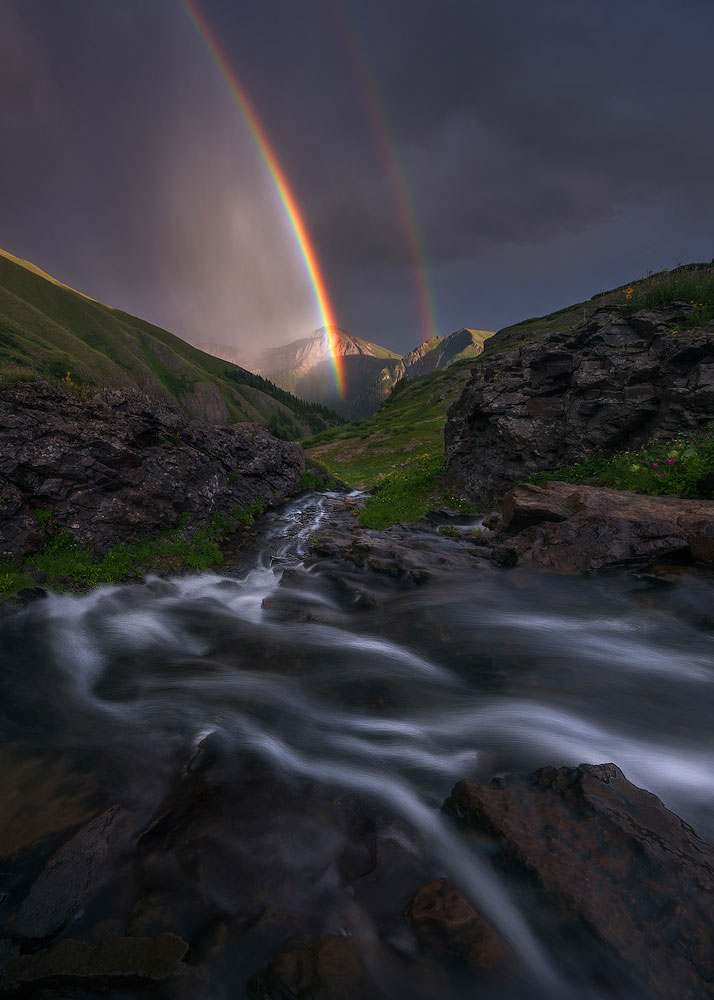
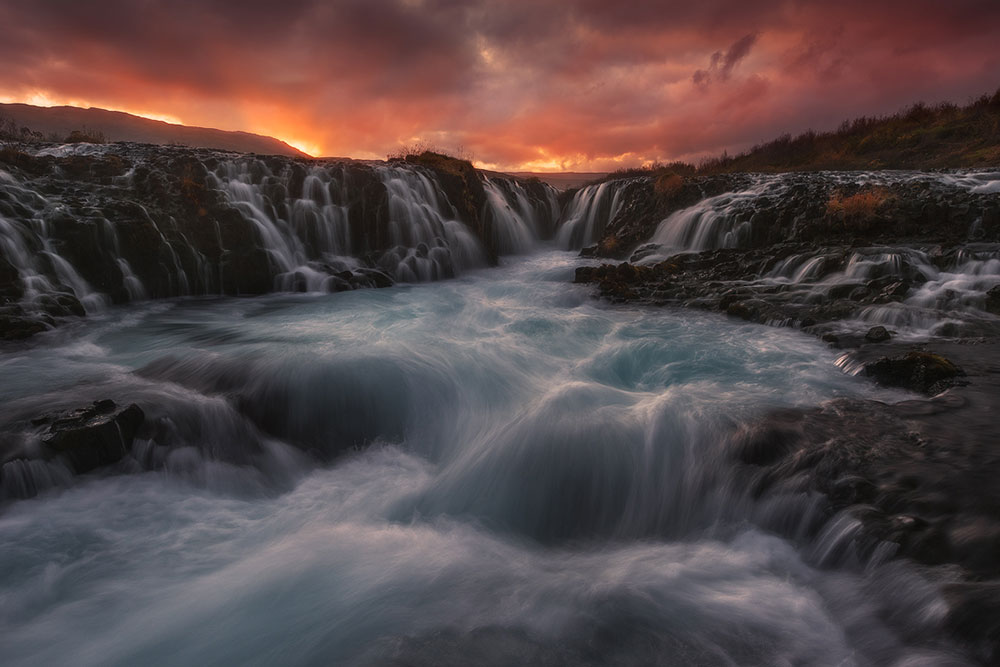
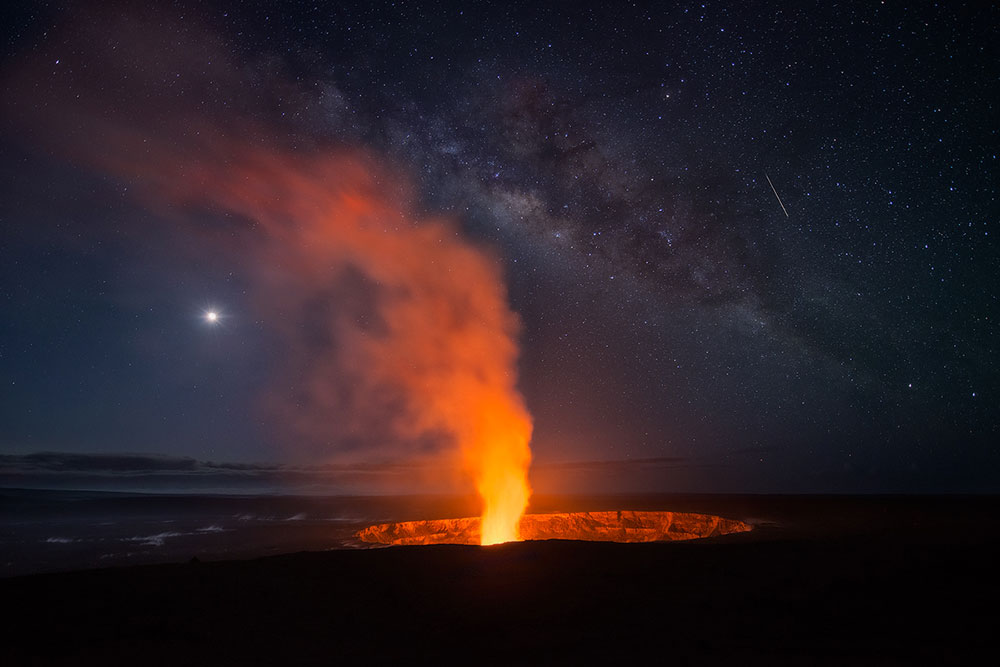
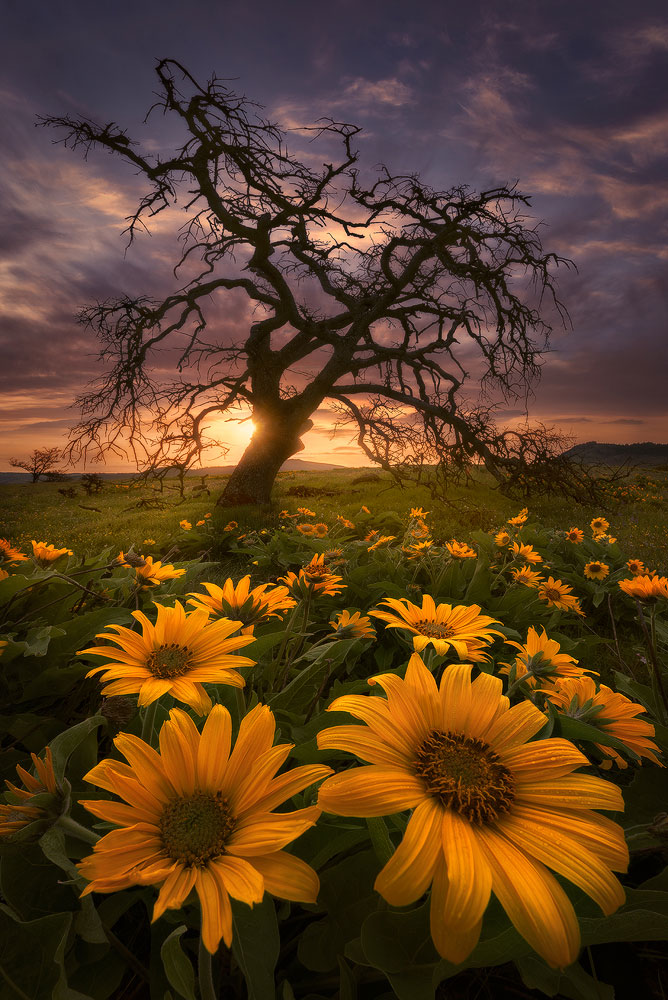
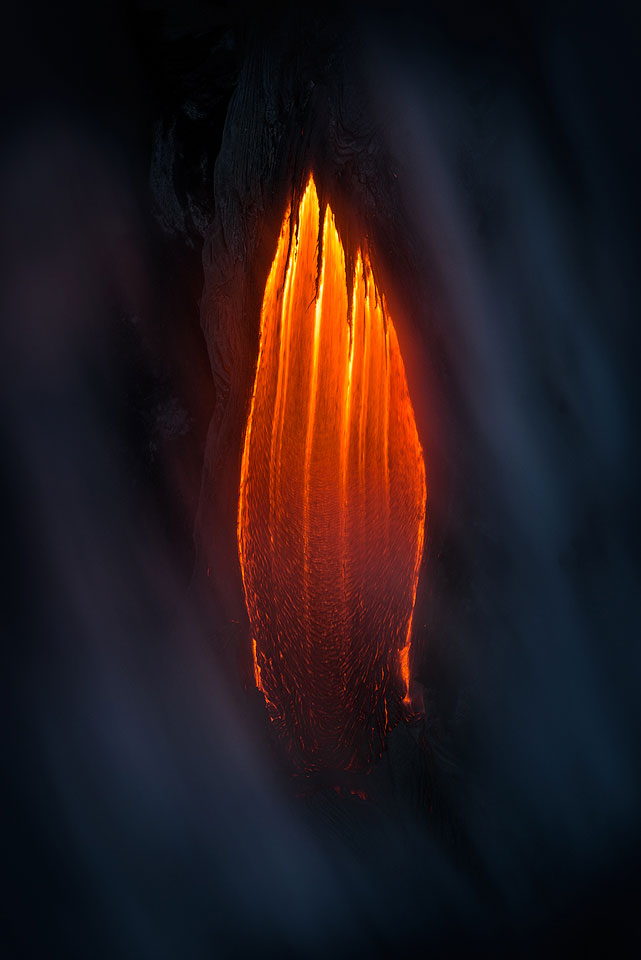



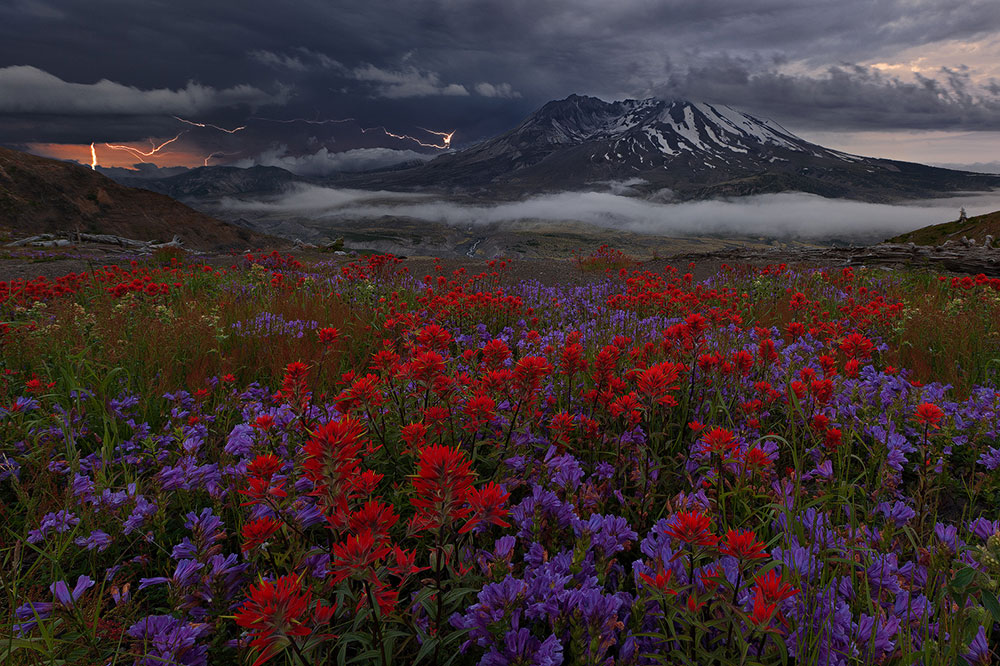
Thanks for all your great information. I just starting to be a portraiture photographer and loving it. I'm in photo clubs and go on photo shoots. I'm eager to learn more and more to enhance my photography. Thanks for sharing! Pat
Your photos are so beautiful, really love the sunflowers & tree, wow
Great article, and stunning photos from a "part-time" photographer!
would like to know the time lapse for this picture, thanks.
These are the best images that I have ever seen in Tamron's "Meet the Photographer" series -- oh my! Incredible. Right place at the right time with the right gear -- and of course, one extremely talented photographer!
Miles Morgan does with photography what Thomas Kincaid did with painting. He is a master who captures the light in an awesome way that allows his photos to speak for themselves. He is a true visionary and an inspiration for all who aspire to reach new heights in their world of photography. Thank you Miles for your creative genius.
WOW! Miles is great. I have been in photography for so years and am a so-so photographer, but my only wishes to get just one great image published in a major publication.
My wife and I will be riding mules to the bottom of the Grand Canyon soon and I'm curious if you have any suggestions as to equipment or photo locations? I'm currently shooting the Nikon D750, 28-300 lens, 10-24 lens, and 90mm macro. I can only take one lens on the mule trip.